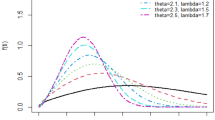Conclusions
The effectiveness of introducing redundancy by using the method of quadrupling depends mainly on the structure of the nonredundant circuit described by the frequency vector\(\mathop \eta \limits^ \to \) and on the relation (characterized by the coefficient θ) between the critical and subcritical failures. The results obtained make it possible to select the types of the nonredundant circuit which ensure maximum reliability of the redundant circuit.
Similar content being viewed by others
Literature Cited
J. Tryon, Quadrupled Logic [Russian translation], in: Methods of Introducing Redundancy for Computing Systems [in Russian], ed. by V. S. Pugachev, Sovet-skoe Radio, Moscow (1966).
W. Pierce, Failure-Tolerant Computer Design, Academic Press (1965).
Z. W. Birnbaum, I. D. Esary, and S. C. Saunders, Multicomponent Systems and Structures and Their Reliability, Technometrics, Vol. 3, No. 1 (1961).
Additional information
Translated from Kibernetika, No. 5, pp. 26–30, September–October, 1973.
Rights and permissions
About this article
Cite this article
Abbakumov, I.S., Lyubentsov, V.M. Effect of structure on the reliability of redundant logic circuits using the quadrupling method. Cybern Syst Anal 9, 746–751 (1973). https://doi.org/10.1007/BF01069707
Received:
Issue Date:
DOI: https://doi.org/10.1007/BF01069707




